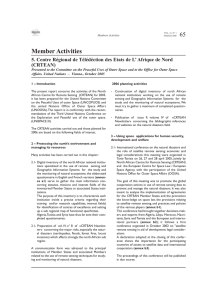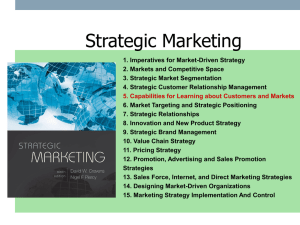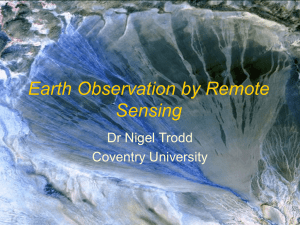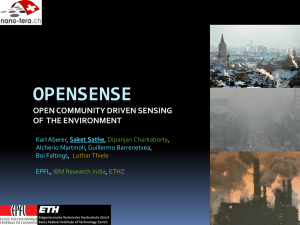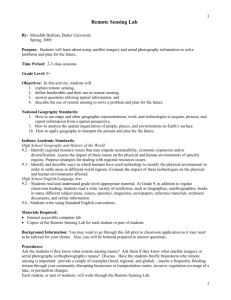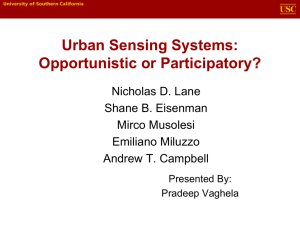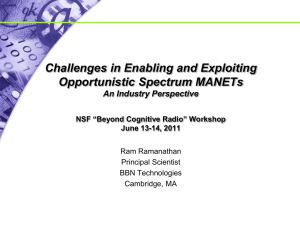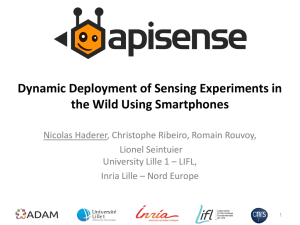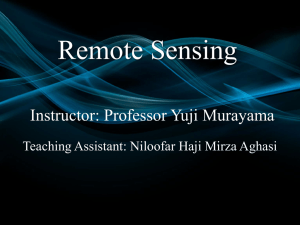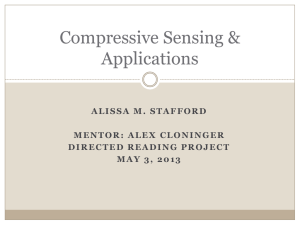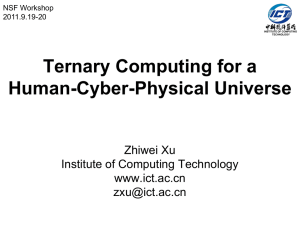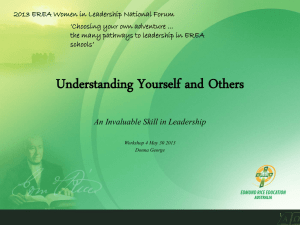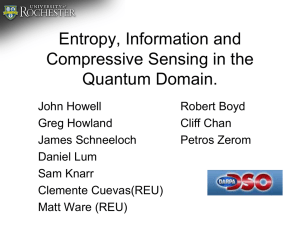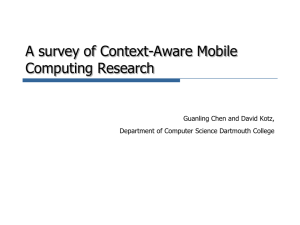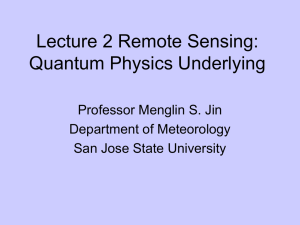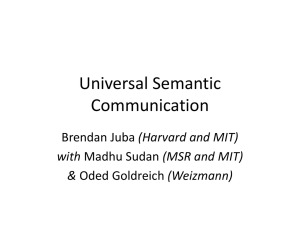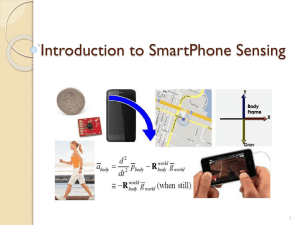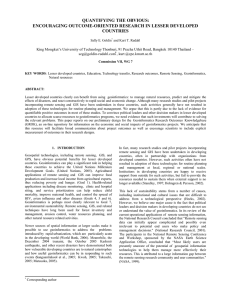Goldin_TheosUserGroup2012
advertisement
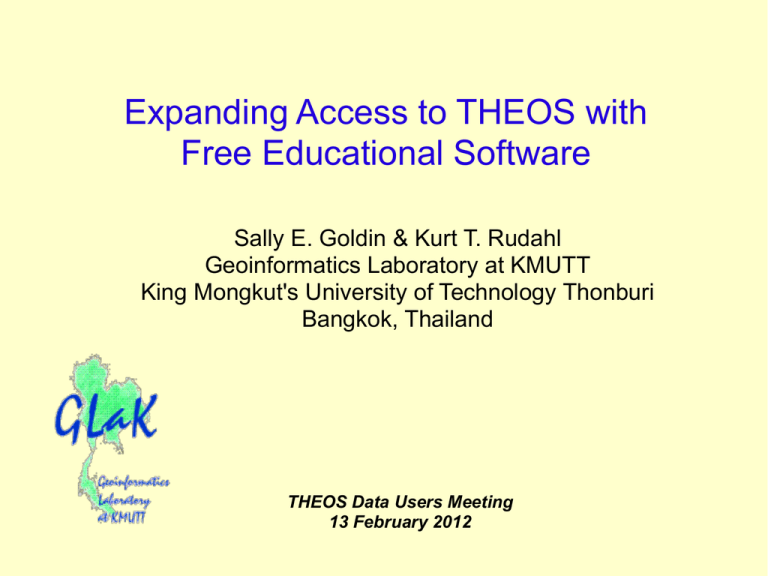
Expanding Access to THEOS with Free Educational Software Sally E. Goldin & Kurt T. Rudahl Geoinformatics Laboratory at KMUTT King Mongkut's University of Technology Thonburi Bangkok, Thailand THEOS Data Users Meeting 13 February 2012 A New Era for Remote Sensing in Thailand Abundant, affordable data Near-real-time information High resolution Under Thai control Agriculture Water management Forest conservation Urban planning Etc... 2 Expanded User Base for RS Imagery Government agencies Local administrative bodies NGOs Educational organizations Commercial companies Communities and cooperatives Many of these new users will know little about analyzing and interpreting remote sensing data 3 What do these new users need? Theoretical knowledge Principles of remote sensing Limitations of imagery Image processing algorithms Practical skills Interpreting images Planning and executing analyses Software tools This is our topic today 4 Introducing OpenDragon Easy-to-use image analysis and raster modeling Multilingual user interface (including Thai) Detailed user manual and context-sensitive help Rich set of core analysis capabilities Imports THEOS data sets Programmer's Toolkit for extensibility Free! 5 History of OpenDragon 1984-1986 - Goldin & Rudahl, at Asian Institute of Technology, recognize the need for affordable software for remote sensing education 1987 – Dragon V1.0 – first remote sensing image analysis package to run on an off-the-shelf PC 2004 – KMUTT provides three years funding for OpenDragon project, to make the software free for educational organizations in SE Asia. After project ends, Goldin-Rudahl Systems, Inc. continues support. 2010 – Goldin-Rudahl Systems makes OpenDragon free for everyone, announces plan to open the source code Since then, the software has been downloaded by people in 85 countries 6 OpenDragon was designed for teaching Context-sensitive help explains every parameter No magic or wizards – approaches analysis operations step by step Scripting capability allows instructors to automate more complex operations Fully internationalized, with versions for many languages Users new to remote sensing do not have to struggle with English 7 OpenDragon Capabilities Gray, composite and pseudocolor display, image overlay, annotation, zoom, capture Band arithmetic, vegetation indices, convolution, principal components, masking Geometric correction/registration Supervised and unsupervised classification including training, signature editing, MDM, max likelihood, K-means clustering, slicing, error analysis Vector capture with image background, rasterization, measurement, area histograms, transect profiles, irregular subsetting, recoding Interactive value display for pixels and regions Buffering, aspect and slope calculation, multicriteria modeling Image histogram, scatterplot, statistics, metadata display and editing Import and export of raster and vector data Log capture to create scripts 8 Programmer's Toolkit Provides header files and libraries to allow users to add new capabilities to OpenDragon Written in standard C for use with free compilers such as gcc Read and write Dragon format images, vectors, signature files, etc. Manage meta data. Excellent resource for education Shortcut to teaching geoinformatics software development Support for researchers developing new algorithms 9 Education using OpenDragon: Case Studies High school workshop on drought analysis 2B-KMUTT – High school research project Graduate thesis work Professional education in geoinformatics programming 10 High School Remote Sensing Workshop In October 2005, at the request of HRH Princess Maha Chakri Sirindhorn and with the cooperation of GISTDA, the OpenDragon project presented a three-day workshop for students from Mahidol Wittayanusorn school. The topic was remote sensing for drought monitoring Experts on remote sensing technology, meteorology, and water resources provide background lectures Labs used OpenDragon for multitemporal analysis of images of reservoirs around Thailand, from normal versus drought years On the third day, students presented their results and conclusions 11 OpenDragon High School Workshop Normal Year Drought Year 12 2B-KMUTT Program Original Image Brightness Component Mathayom 5 students spend three weeks at KMUTT during summer break, working on research projects with faculty One young woman worked with us to develop code for the Tassled Cap transformation using the Programmer's Toolkit Although she knew nothing about remote sensing before she came to KMUTT and little about programming, she successfully completed her project. Greenness Component 13 Master's Thesis Improving the Estimated Area of Rice Cultivation by Classification Techniques by Ithiphol Ekahitanonda Compared standard maximum likelihood classification with multitemporal fuzzy-rule-based classification Best fuzzy rule set was developed using Genetic Algorithms Mr. Ithiphol wrote more than a dozen C modules using the Programmer's Toolkit to implement his novel algorithms 14 Computer Programming for Geographers Course for graduate students in Geoinformatics – many already work in geospatiallyoriented positions Presented twice at Chiang Mai University, once at Burapha University Goal is to teach students enough programming that they can: Understand how geospatial data is represented and manipulated in a program Modify an existing program to customize its behavior Understand what is “under the hood” of geospatial software in order to critically evaluate the answers that software provides Half lecture, half lab – Programmer's Toolkit used for raster exercises Hand-on work modifying real code builds students' confidence 15 How can you get OpenDragon? Go to http://www.open-dragon.org/software_dl.html Fill in the contact form to register You will receive a serial number by email Return to the www.open-dragon.org site. Enter the serial number to download the package, sample data, and the Programmer's Toolkit, if you wish OpenDragon currently runs on Windows XP, Windows Vista and Windows 7. A port to Linux is planned for the future. 16 Other Resources Learning Remote Sensing is a textbook aimed at new users of R/S imagery. It provides hands-on exercises using downloadable data sets The book is available in both digital and print formats. Contact us at break or visit the OpenDragon website for details 17 OpenDragon is not for everyone OpenDragon can process images up to 1024x1024 in size. These capacity limits mean it is not appropriate for production image processing Dragon/ips® Professional is a more powerful commercial version capable of processing full THEOS scenes OpenDragon provides a way for new users to ease into the complex world of remote sensing image processing OpenDragon speaks your language OpenDragon is free 18 Questions? Contact us for more information! Sally Goldin & Kurt Rudahl Geoinformatics Lab at KMUTT seg@goldin-rudahl.com www.open-dragon.org 19

